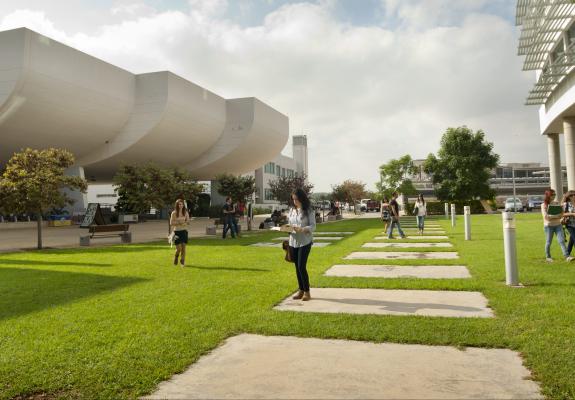Is Cyprus Failing Cyclists?
Here’s Why Cyprus Still Lacks a Reliable Cycling Infrastructure
In September Cyprus celebrated Mobility Week, with various municipalities, NGOs, and urban groups organizing car-free street events like Laou Laou by OPU Collective, and bike rides across the country among other awareness initiatives. "LaouLaou" and “Pame Kaimakli Festival” connected Kaimakli with Agioi Omologites, highlighting the growing interest in urban cycling. Despite the enthusiasm shown during such events, Cyprus still faces a significant challenge: the lack of a comprehensive and connected infrastructure, and particularly the bike lane system. While some progress has been made, with sporadic bike lanes popping up in cities, there is still no safe, integrated cycling infrastructure for residents to rely on. Why is this the case?
Over the years, Cyprus has seen a slow but steady increase in bike lanes. Yet, these efforts often feel disjointed and fragmented. While the occasional lane offers a glimpse of what could be a bike-friendly city, these lanes (which can also be used by scooters and other micro-mobility devices) rarely connect in a meaningful way, leaving cyclists exposed to traffic in many parts of the city. Without a comprehensive plan to safely link these lanes, cycling remains a risky endeavor, especially for those who might consider it as an alternative mode of transportation.
The new cycling infrastructure unveiled recently by the Ministry of Transport, such as the route connecting universities in Nicosia, is a step in the right direction. Last Year, the Minister of Transport, Communications and Works, Mr. Alexis Vafeades, and the Dutch Ambassador, Ms. Elke Merks-Schaapveld, announced the "Cycling in the City 2023" event, aimed at promoting sustainable transport and urban cycling in Cyprus. However, the infrastructure still falls short of providing a citywide network that makes cycling genuinely safe and convenient for daily commuting.
Another glaring issue is the lack of adequate digital support for cyclists. Google Maps and Apple Maps, the two most widely used GPS and mapping services, do not include a cycling option in Cyprus. In a private meeting regarding this issue, civil servants claimed that The Republic of Cyprus cannot officially collaborate and share data with Google and similar services if there is any political constraint. What is political here, is that Google maps and other digital online maps show the current street names in the occupied part of Cyprus, the names that were given after the division. If the government of Cyprus collaborates with such platforms, they believe that it is an indirect recognition of the replacement of the original Greek names of the streets. So, it's a matter of political correctness.
This omission makes it even harder for residents and tourists to identify safe and efficient bike routes. The Cyprus Energy Agency has taken the initiative to create a bicycle path layer on Google Maps, from information gathered by cyclists, and popular apps such as komoot. The fact that the government fails to share adequate data with the most common navigation apps speaks volumes about how cycling is still sidelined in the country’s urban planning.
Cycling has not yet been fully embraced as a serious mode of transportation by public authorities and planners
The absence of this digital infrastructure reflects the larger issue at hand: cycling has not yet been fully embraced as a serious mode of transportation by public authorities and planners. This is evident in the overall lack of promotion and investment in bike lanes that connect all parts of the cities safely. It is important to note that while car and walking routes are available, public transportation is also emitted from these platforms. To find public transportation directions, you can use the Pame App.
One of the biggest hurdles facing the cycling community in Cyprus is the perception that urban cycling is dangerous, difficult, or even impossible. Organizations like Friends of the Earth Cyprus are working hard to change this narrative. During Mobility Week, they hosted workshops like "Cycling in the City: A Survival Guide" . These initiatives aim to educate the public on safe cycling practices and dispel myths that make people hesitant to adopt this mode of transportation.
They argue that despite the challenges, urban cycling is not only feasible but also safer than people think when done correctly. Their goal is to encourage more people to cycle and, in doing so, increase pressure on local governments to develop better infrastructure. After all, a city becomes more bike-friendly when more people take to the streets on two wheels.
The lack of a proper cycling network represents a missed opportunity for Cyprus to address several critical issues, such as traffic congestion, pollution, and public health. As the former Mayor of Nicosia, Constantinos Yiorkadjis, pointed out during the inauguration of a new bike lane, promoting cycling is part of the city’s vision for a sustainable future. His words echoed a broader commitment to reduce the ecological footprint of the city and improve the quality of life for its residents.
Yet, despite the ambitious plans, much of the progress remains confined to small-scale projects. What Cyprus needs is a comprehensive, nationwide approach that connects cities and towns through a safe, reliable network of bike lanes. This would not only improve urban mobility but also promote healthier lifestyles and reduce carbon emissions.
As we move forward, the role of cycling in Cyprus must be elevated. Digital tools like Google Maps need to be updated to include cycling routes. Local governments must prioritize, and allocate appropriate funding, completing a citywide network of bike lanes, connecting neighborhoods safely and efficiently. Moreover, public awareness campaigns should continue to promote the benefits of cycling, helping to shift public perception from seeing it as a recreational activity to recognizing it as a viable means of transportation.
Improving the conditions for cycling as a means of getting to places automatically transforms the urban space for other modes of transport and other uses. European cities that invested in cycling in previous decades are now more pedestrian friendly, more child friendly and accessible to people with reduced mobility (elderly, disabled, etc).
FastForward spoke with Marina Kyriakou, the Bicycle Mayor of Nicosia who gave us an exclusive statement:
“Improving the conditions for cycling as a means of getting to places automatically transforms the urban space for other modes of transport and other uses. European cities that invested in cycling in previous decades are now more pedestrian friendly, more child friendly and accessible to people with reduced mobility (elderly, disabled, etc).”

Cyprus enjoys bike-friendly weather for 10 out of 12 months of the year, with approximately 300-340 days of sunshine annually. This climate could make the island a cyclist’s paradise, yet there is a common misconception that the heat makes cycling impractical. In reality, the extreme heat only lasts for about two months, while the rest of the year provides ideal conditions—weather that would be considered perfect for cycling in many other countries.
With initiatives like the Nicosia 2030 plan and workshops like those organized by Friends of the Earth Cyprus, there is hope for a future where cycling is fully integrated into daily life. But to get there, we need to move beyond sporadic efforts and focus on building an infrastructure that supports and encourages cycling in all its forms—whether for commuting, exercise, or simply enjoying the city. It’s time for Cyprus to truly embrace cycling as part of its mobility solution.






